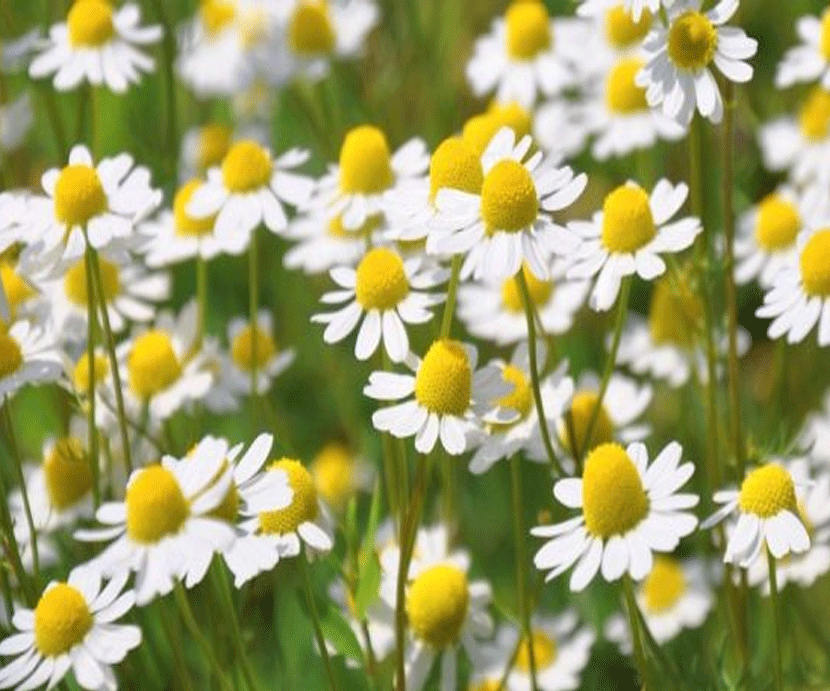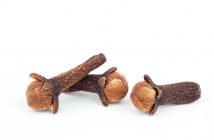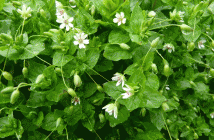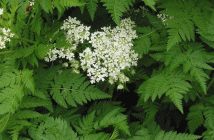 The popularity of chamomile (Matricaria chamomilla) reaches back to antiquity. The Egyptians called it the “Flower of the Sun God” due to its diaphragmatic features, shown to help curb fever. The Greeks also valued the plant-known as “ground apple” for its scent-as a medicinal. In the Middle Ages, the Anglo-Saxons considered it one of nine sacred herbs provided to man by the god Widen.
The popularity of chamomile (Matricaria chamomilla) reaches back to antiquity. The Egyptians called it the “Flower of the Sun God” due to its diaphragmatic features, shown to help curb fever. The Greeks also valued the plant-known as “ground apple” for its scent-as a medicinal. In the Middle Ages, the Anglo-Saxons considered it one of nine sacred herbs provided to man by the god Widen.
The flower-which can be harvested during the summer months-constitutes the useful portion of the plant. Its active constituents in-elude volatile oil (a dark blue color when steamed distilled), flavoring, comparisons, plant acids, fatty acids, carcinogenic triglycerides, salivates, holiness, and tannin. Similar in its effects to Roman chamomile ( Ch-Mameluke mobile), the herb serves as an analgesic, anti-inflammatory, antihistamine, antiseptic, antispasmodic, bitter tonic, decongestant, diaphragmatic, diuretic, and sedative.
Chamomile has proven effective in a wide range of applications.
Ingested as a tea, it can treat menstrual and other muscle cramps, up¬set stomach, excess gas, diarrhea, constipation, fever, congestion, hemorrhoids, nervous tension, poor appetite, digestive problems, headache, insomnia, ulcers, nausea and vomiting, gonorrheal, and edema. In a zits bath, the tea sooth cystitis and external hemorrhoids. Used as a poultice, it can heal burns, infections, rashes, and skin ulcers; it also functions as a hair
sonic. Steam inhalation eases asthma, hay fever, sinusitis, and catarrh, and the essential oil can be applied externally or eczema and neuralgia.
Its versatility has rendered it one of the most widely used herbs to¬day. This is reflected by its inclusion in Deborah C. Harding’s The Green Guide to Herb Gardening: Featuring the JO Most Popular Herbs (2000).



